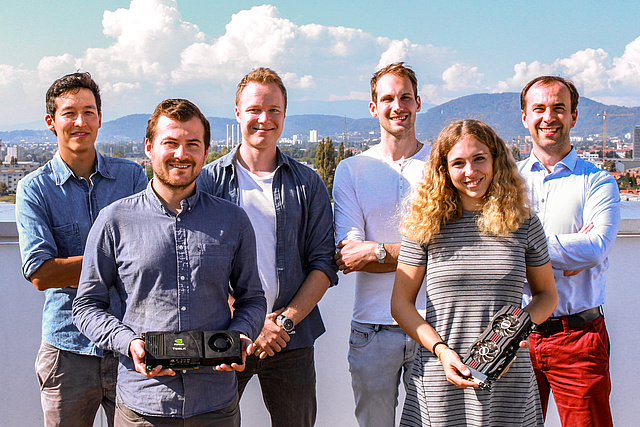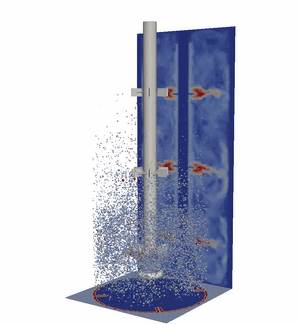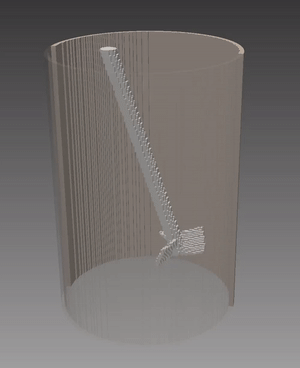
F.l.t.r.: Simon Rustige, Philipp Eibl, Oliver Tomaschitz,
Gottfried Segner, Laura Schneider, Christian Witz

with three Rushton turbines
In his PhD Christian Witz rewrote and adapted a preexisting CPU programm to be used on GPUs (Paper 1) and achieved a huge speedup using newly developed Lattice-Boltzmann algorithms (LBM), Lagrangian particle tracking (LPT) and efficient parallelisation strategies. The simulations were validated using a 150l acrylic glas pilot plant reactor and a conductivity based local holdup measurement system. Finally simulations of industrial sized reactors up to 250 m³ were possible (Paper 2).
Since then the functionalities of the program have been constantly expanded. Non-Newtonian fluids can be simulated and up to 32 GPUs can be used to increase the simulation speed. The power consumption of the stirrer is determined during the simulation as well as the shear rate distribution in the reactor. Species like nutrition, dissolved oxygen or carbon dioxide are transported by the fluid flow field and the path of the microorganisms in the reactor (lifelines) can be followed.

In his PhD Philipp Eibl is working on additional physical models in order to analyse the full biological process in-silico. This includes simulation of the temperature distribution inside the reactor with heat sources such as active organisms as well as heat sinks such as heat exchangers or cooling jackets. Nutrients are not only present as dissolved substrate but may also be present as a dispersed immiscible phase that can be modelled with highly resoluted Eulerian methods or Population Balance Models, depending on the droplet size.
Ultimately, complex biological models are coupled with the fluid flow field. This not only includes prediction of growth and production rate of funghi or cell cultures, but also mechanical influences on cell damage or fungal morphology and size distribution. All these models are implemented with special attention to computational efficiency, using state-of-the-art GPU-Technology.
